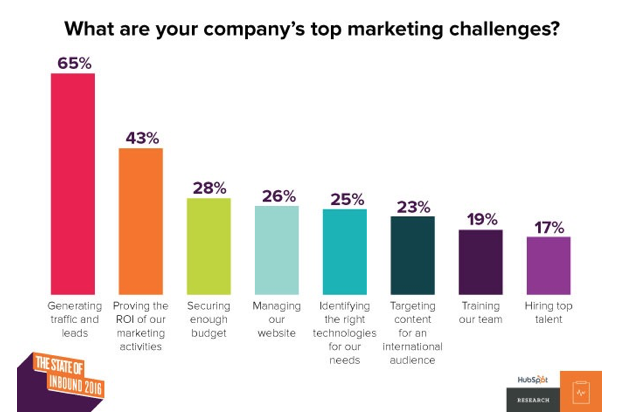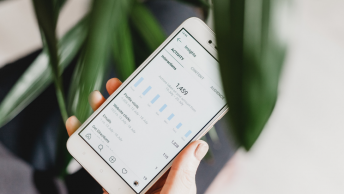Social Media is a great platform for marketing, but only if you understand it. You must understand and be able to analyze your social media ROI to get anything out of it. Here’s how you do it.
Social media has turned into a crucial part of digital communications a brand does with their audiences. The ability of these channels to reach a large group of people, while offering precise targeting at low costs, has made it popular among marketers.
Numerous studies and surveys conveyed the effectiveness of social media networks as marketing platforms. For instance, in 2013, 74% of marketers reported that they saw an increase in their website traffic after only spending 6 hours a week on their social media endeavors.
Similarly, a survey conducted by a marketing agency, DigitasLBi, revealed that Facebook influenced over 50% of purchase decisions made by users in 2015.
Numbers like the ones mentioned above have had marketers flock towards social media channels to reap the benefits. However, marketing on social media comes with one of the fundamental challenges of any kind of marketing- measuring the ROI.
In fact, in a survey conducted in 2016, marketers identified measuring ROI as the second biggest challenge they face, right after generating traffic and leads.

Defining Social Media ROI
Just like ROI for any kind of investment, social media ROI is the relationship between the money, time, and resources you invest in your social media marketing and the return it brings.
The above formula can easily be employed to measure the ROI of your social media efforts. However, the formula requires you to have at least two variables, the total investment and profit made.
The investment variable is no challenge to determine. However, to measure the profit, you would need to know the total revenue made. This is where attaching a dollar value to your social media goals come in (more about this in just a while).
SEE ALSO: 3 Quick Tips to Achieve Content Marketing ROI
Why is it important to measure social media ROI?
The total spending on social media promotions is expected to account for 16% of the total digital ad budget this year.
However, talking to people about budgeting only on basis of impressions and Twitter shares is not as effective as presenting numbers. When presented with hard facts and quantifiable results of a social media campaign, people are forced to take social media seriously. Here are some other reasons behind the importance of measuring social media ROI.
- Precise figures will help others understand the importance of social media marketing.
- Measuring ROI would also help you determine the effectiveness of your strategy.
- Measuring ROI and understanding corresponding insights would help you build better strategies in the future.
How to Measure Your Social Media ROI
It is now clear that measuring the ROI of your social media efforts plays a crucial role in dictating future strategies and budgets.
The Cost of Your Social Media
The first step in this process is to determine the cost of your efforts (Investment). It goes without saying that you should have a budget in mind before you determine how much you are going to spend.
When considering the overall cost of a specific social media campaign, consider the following.
- The cost of your social media resource– If you have hired a resource, consider the time they spent on the campaign in question. Then multiply this with their hourly wage. Even if you are handling social media on your own, multiply the number of hours you spend on a campaign with the average wage of a social media executive in your area. This information can easily be obtained using Glassdoor.
- Tools- If you employ any social media management tools include their monthly cost.
- Paid Promotions- Include the cost of paid promotions you have done across channels. These include Facebook sponsored posts or Linkedin Lead generation campaigns.
Determining Goals
The next step in this process is to determine the goals of your efforts on social media. These goals will dictate which metrics you will be measuring in order to determine the ROI of your campaign. Keep in mind to set goals that complement existing business goals, and for this reason, it is possible that every business would have a unique set of goals.
Think about what you intend to achieve by marketing over social media and which benchmarks would be the indicators that you are moving closer to your objective.
Social media goals differ among marketers and businesses. You have to determine which ones align with your business objectives. Here are a few examples of what your goals may look like.
- 500 new page likes on Facebook by the end of the month
- 30 new subscribers to your mailing list by September
- Purchases from the website through the traffic from your social media
- 100 downloads of your ebook before the end of a certain period of time
Once you are clear about your goals, you can dedicate your concentration to measuring relevant metrics. Once again, the emphasis is on aligning your social media goals with business objectives.
For instance, if the business objective is to increase sales, the goals may be product purchases or customer signups. On the contrary, if the goal is to create more brand awareness, the goal would be about increased engagement on social platforms.
Tracking Metrics
Fortunately, as a result of the popularity of social media marketing, there are a number of free and paid tools out there to track the metrics. You can decide which one offers the features you need and still fits in your budget.
SEE ALSO: How to Measure Social Media ROI in Google Analytics
For instance, the RJ Metrics’ CLoud BI is capable of calculating the customer lifetime value (CLV) for your business, before creating individual CLV profiles. It will also tell you which social media platform is sending the most visitors to your website.
It also boasts advanced features. For example, churn analysis gives you a comprehensive and informed insight of the behavior of your audiences and customers online.
Some of the most popular social media tracking tools are:
Assigning Dollar Value to Your Goals
Once the goals are decided upon, and the tracking is in place, it is time to bring real numbers into the equation. There are several parameters you can choose from to determine the monetary value of your efforts:
- Lifetime Value of a Customer: the average amount you earn from a customer
- Average Sale: the average sale amount on your website
- Paid Promotions: the amount you would have spent on paid promotions to get the same amount of engagement your campaign brought organically
To illustrate, suppose your average sale amount is $50, and 20% of the customers that visit your website are converted into a sale. This means that every impression your social media campaign brings to your website earns you about $10.
Let’s say a campaign brings 1,000 visits to your website. That means your social media efforts for that campaign were worth $10,000.
Conclusion
The metrics you calculate don’t just help you track the ROI. If analyzed carefully, tracking social media metrics would give you valuable insights about your audience. These insights will then dictate future actions and strategies to refine the quality of your results.
Social media platforms have proven their worth as one of the most effective ways to directly reach out to your audience. The ability to determine the ROI on your social media gives marketers solid proof of the effectiveness of their efforts over social media.











